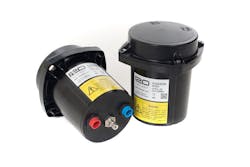About the author:
Lori Lovely is a freelance writer for Water & Wastes Digest. Lovely can be reached at [email protected].
The sun will gradually — but permanently — set on 3G networks in 2022, as Mobile Network Operators (MNO) decommission 3G services over the course of the year while they invest in more advanced cellular technology. In order to upgrade to 5G, it is necessary to free up some of the highly regulated radio spectrum and infrastructure by shutting down older services.
This is not the first time carriers have transitioned to newer technology. In 2009, many MNOs shut down their 2G networks when they upgraded to 4G to meet consumer demand. Because the water and wastewater industries were early adopters of 2G, they have already been through the 3G and 4G rollouts, so some of the tech companies that provide services to water companies were prepared for this evolution.
Advanced Notice
Badger Meter established partnerships with cellular providers, which resulted in early warning about the switch.
“We knew the end of 3G life was coming a couple years ago,” said John Fillinger, director of utility product marketing. “That gave Badger Meter time to develop a plan to make sure critical meter reading is not left behind.”
Those partnerships should be important to water utilities too because, as Fillinger said, if tech companies do not have connections, they cannot be prepared for the inevitable iterations of upgrades to newer technology. Keeping customers in the loop was important to Badger Meter. Some of their customers have already started replacement projects in preparation for the next generation of cell technology.
The 3G sunset affects i2O Water a little differently. Recently acquired by Mueller, the British-based company supports more than 100 water utilities in 45 countries by monitoring the water supply to more than 50 million people worldwide.
“Different countries are at different stages of technology,” explained Joel Hagan, i2O Water CEO. “As we reframe the spectrum, we need to think carefully [about] different countries.”
For example, in the U.S., utilities choose one network, while other countries pick up roaming networks, which he believes offers more flexibility. While some countries are using 4G, Hagan believes “2G will be around a long time in the UK.” The company started with 2G seven years ago. When it upgraded to 3G, it retained 2G fallback. There is speculation within the industry that 3G networks will be disabled before 2G, which is still considered critical to infrastructure despite its limitation.
More recently, i2O has adopted ping-compatible technology and narrowband Internet of things (NBIoT), a low-power, wide-area network radio technology standard developed for cellular devices). Two years ago it incorporated LTE-M, which Hagan said dominates in the U.S. because it is a good candidate for water utilities that need a low-cost solution offering reduced power consumption and long battery life where there’s no need to transfer large amounts of data.
In preparation for the shift to 5G in the US, i2O Water customers have to replace devices.
“But, since i2O is new to the US, there are not a lot out there,” Hagan observes. Their UK clients have approximately 10,000 devices, but he counts devices at small US municipalities in the tens.
Carrier’s Sunsetting Process
AT&T is using a similar process to the one it used in 2017 when retiring its 2G network by expanding its 5G network capacity in an increasing number of markets. Since its existing number of channels will not have the capacity to handle the expected increase in usage in 2022, the carrier intends to double its channels. This can only be accomplished by shutting down its 3G network, Kevin Hetrick, vice president of Access Construction and Engineering, told Fierce Wireless.
Verizon, which uses different 3G technology, is capable of dedicating more of its spectrum to 5G and still support legacy 3G users. Although Verizon stopped activating 3G CDMA devices on its network in 2018, it extended its 3G CDMA shutdown to the end of 2022 in order to “minimize disruptions” to customers, according to a blog by Mike Haberman, vice president of Network Engineering. The carrier has developed migration plans to ensure that their business customers are upgrading devices to the 4G LTE or 5G technology.
Timing the Migration
According to the Federal Communications Commission, the 3G sunset will follow this schedule:
- AT&T – February 2022
- Verizon – December 31, 2022
- T-Mobile (Sprint’s 3G CDMA network) – March 31, 2022
- T-Mobile (Sprint’s 4G LTE network) – June 30, 2022
- T-Mobile (3G UMTS network) – July 1, 2022
- T-Mobile (2G network) – TBD
What Can 5G Offer Utilities?
“Each time technology transfers to the next generation, it brings more features,” Fillinger said. The 3G and 4G networks provided increased data rates, lower latency and more network availability; 5G will provide even more. “The aim of 5G technology is data, not just cellular communication.”
Thus, the benefits to the end users include better performance and range, and an increased number of times a device can communicate per day.
“The technology is not comparable,” Fillinger added. “We’ll get more useful data—real-time data, 15-minute interval data vs. hourly or daily data.”
Not only will the 5G network be able to provide additional data, but it will do so using lower power without sacrificing battery life.
“Customers should see improvements in greater coverage, battery efficiency, signal penetration and longevity,” Hagan noted. Benefits of 5G that he views as less important for the water industry include the ability to carry more data and latency. “The industry sends small amounts of data and there are few time-sensitive issues in water, so transmitting once an hour is fine.”
Some long-term benefits of the switch relate to the new devices. Accelerated life testing demonstrates the robustness of new products and devices for i2O Water. They are also cost-effective because they can control the network remotely, reducing or eliminating the need to visit sites. He estimates a return on investment of two years, thanks to savings on manpower, or possibly even a matter of months when considering the reduced amount of energy needed for pumping. “It depends on the size of the water company.”
How Networks Have Evolved
Frequently referred to as long-term evolution (LTE), 4G provided high-speed connectivity and improved accessibility to remote sites, in part due to broad use of the radio spectrum. Use of the 800 MHz range allowed a bigger coverage area than 3G, enabling it to reach remote areas while still providing greater data rates. By also using 2.3 GHz and 2.5 GHz frequencies, 4G increased bandwidth in dense urban areas.
Currently, 4G is widely available and a cost-effective global cellular network. Although more than 50% of mobile connections use the 4G network, it still lacks 100% coverage, particularly in rural areas.
Due to the improved performance offered by 4G, it is expected to coexist with 5G in providing a replacement service for at least a decade. While 5G has immense potential, because it uses the 3.5 GHz and 3.8 GHz ranges to provide similar coverage in urban areas, as well as part of the radio spectrum previously reserved for TV broadcasts, its use of higher frequencies requires additional cell towers. Hagan applauded this move, viewing cellular as a superlative choice for remote locations where there is not high density of deployment of devices and little access to power.
Looking Beyond Cellular Connections for Utilities
But 5G is not the only cellular network available. Some European countries are using private LTE networks that use parts of the radio spectrum to provide 4G on lower frequencies. These can provide remote service to industrial devices in applications such as substations.
Germany dropped its ISDN network for an all-IP network in 2018 to it allows customers to migrate to a fixed-line replacement.
In the U.S., some water technology companies are using satellite systems instead of cellular. For 15 years, the FlexNet communication network has been providing the ability to transmit near real-time data between utilities and their meters on a Sensus-owned, FCC-licensed radio spectrum, said Kim Genardo, senior corporate communications manager for Xylem, a global water technology company operating in 150 countries.
Genardo said that Sensus, a Xylem brand, provides an “interference-free, controllable radio frequency environment, with superior RF performance for critical infrastructure utility networks.”
Advantages of the Sensus FlexNet communication network include:
- Reliability. Billing reads, alarms and critical data messages are not competing with RF traffic associated with devices operating on unlicensed and shared networks.
- Predictability. It is protected by the FCC and managed by Sensus, for exclusive use by the utility.
- Scalability. Through configurable modulations, upgradable firmware and long-range RF coverage, FlexNet allows for flexibility to adapt to changes.
- Power. Through long-range communication radios, the FlexNet SmartPoint transceivers enable RF to propagate for miles.
Additionally, Sensus can update the FlexNet system with new software or meters as the technology advances.
“There is no stranding of assets,” Genardo said. She noted the network still supports the original FlexNet water, gas and electric solutions developed years ago, even as new software and hardware products are released and the
system evolves.
“Weather events are a consideration,” Genardo added, but she said the FlexNet network has a “track record of being storm-hardened,” for example, by helping two water customers through the historic winter storm in Texas a year ago.
Another company using satellite instead of cellular is SmartCover Systems, a provider of technical systems for private and public sewer utilities.
“Our founders believed that cellular is not reliable,” said Heather Towsley, vice president of marketing. Instead, the company uses a low-earth orbiting bi-directional satellite constellation that is positioned only 485 miles above the earth to transmit data (as opposed to other networks that use a geostationary orbit about 22,000 miles above the earth).
The proximity of the satellites and L-Band frequency provides strong signals and fast connections, using smaller antennas and low power requirements.
“There are no data gaps because our satellite constellations are lower on the horizon,” Towsley said.
As the first and only remote sewer monitoring system using a perennial, 24/7/365 satellite-based communications network, SmartCover offers advantages for remote monitoring in out-of-reach locations such as ravines, between buildings and outside metro areas, she added. It is the same network the Department of Defense uses, she said, providing real-time data in minutes, with no software downloads or upgrades needed. Towsley considers it more secure than cellular.
“If a cell tower goes down, your data goes down,” she said. With climate change, the country is experiencing more severe weather events that could threaten cell towers. “This is the high-tech approach to utility management we need.”
Connectivity Will Continue to Evolve
Hagan said that LP1 technology has been filling the gap mobile communications left behind: specifically, the need for greater bandwidth as more real-time data moves around.
“Most monitoring devices don’t send large amounts of data, but they can’t charge overnight,” he said. “Mobile comms created the IOT to not lose that market: lower power usage, a small amount of data. That’s now being propagated into 4G and 5G, using existing structure.”
Today, 4G and 5G are paving the way for high-speed, low-latency networks ideal for Industrial IoT. Hagan observes that “IoT is written into the standards to remain consistent in evolution for technical stability.”
Building modular, flexible platforms that can grow over time at the customer’s pace is part of the evolutionary process he envisions as the industry works to predict technology changes 10 to 15 years ahead.

